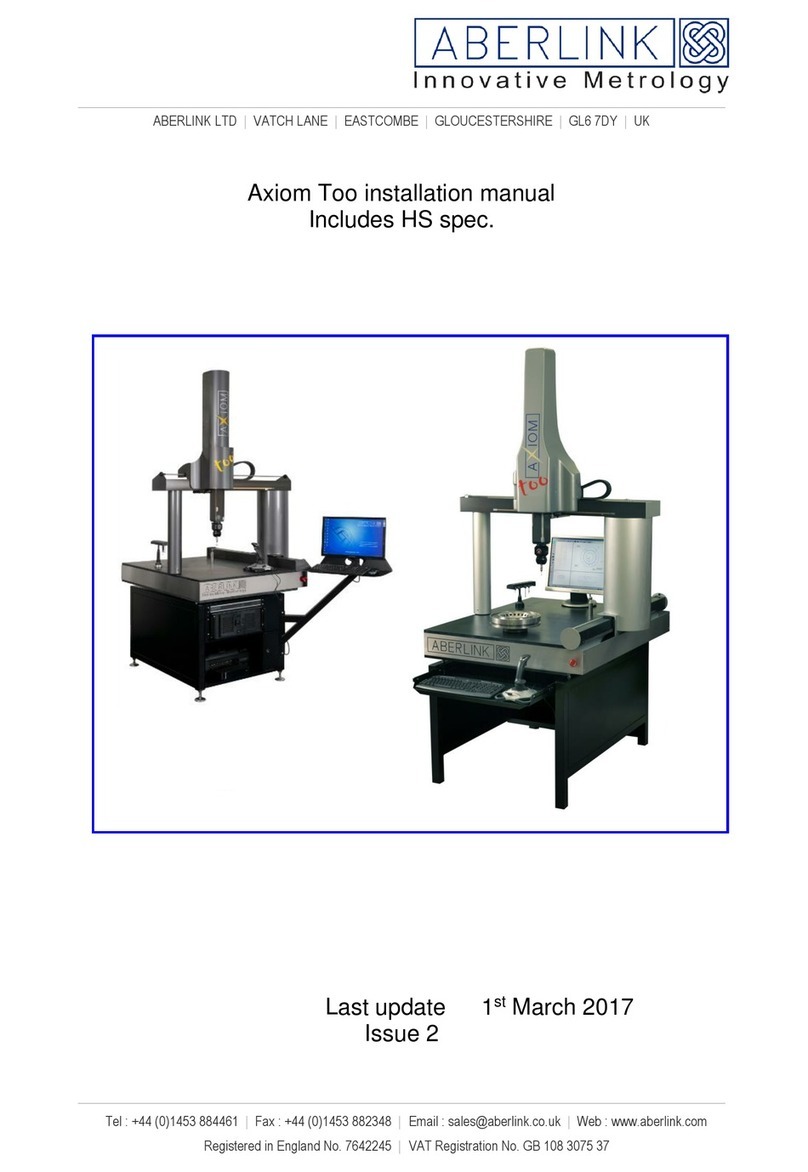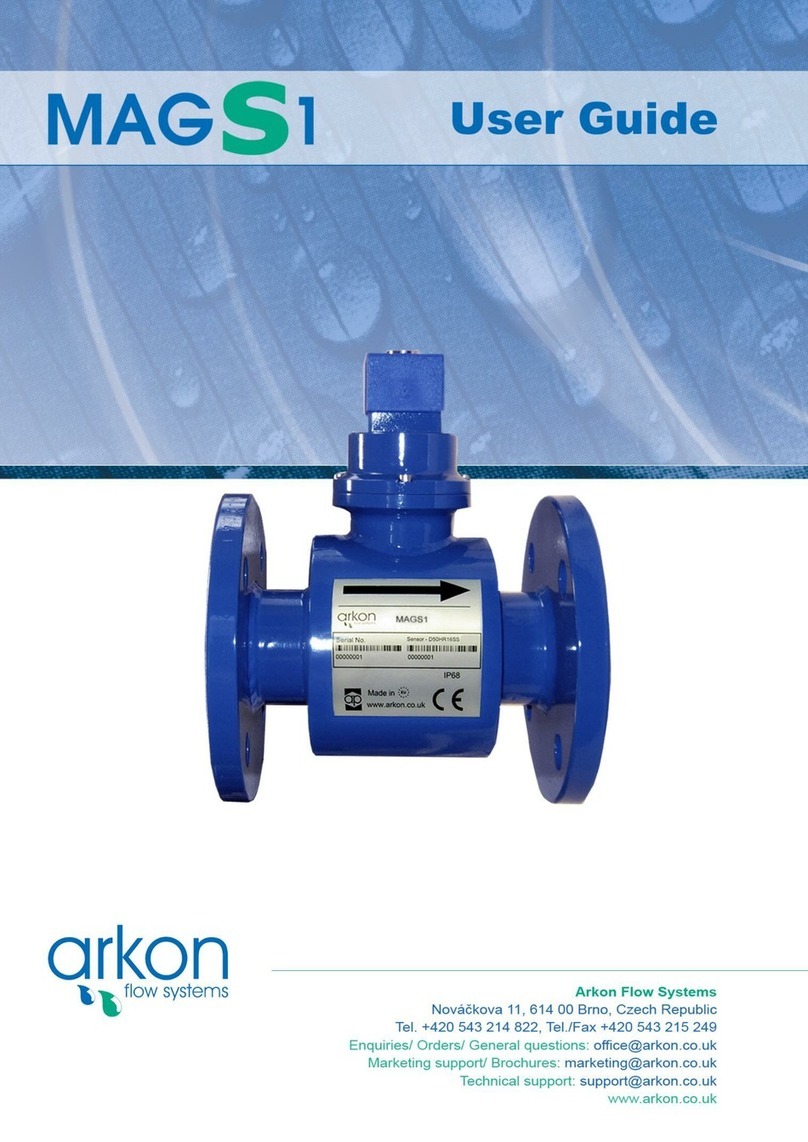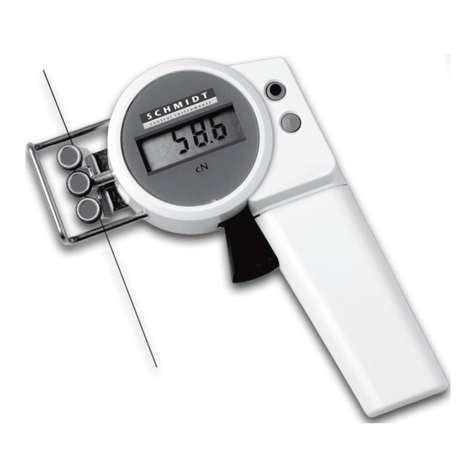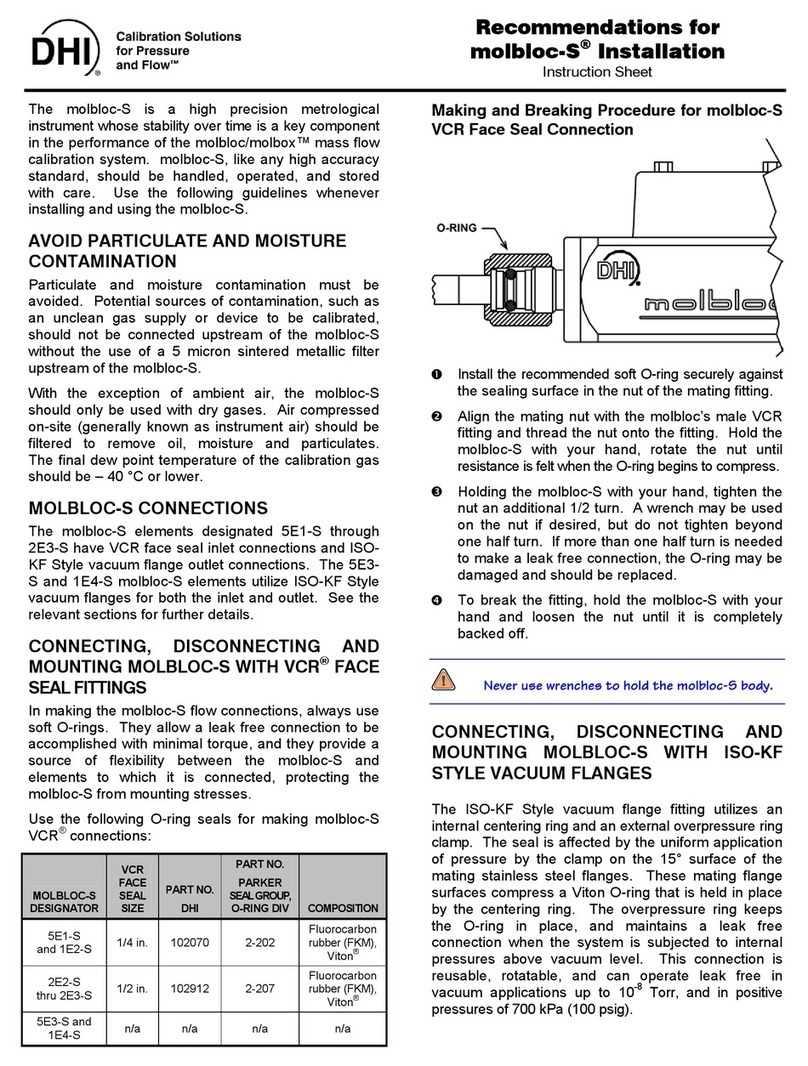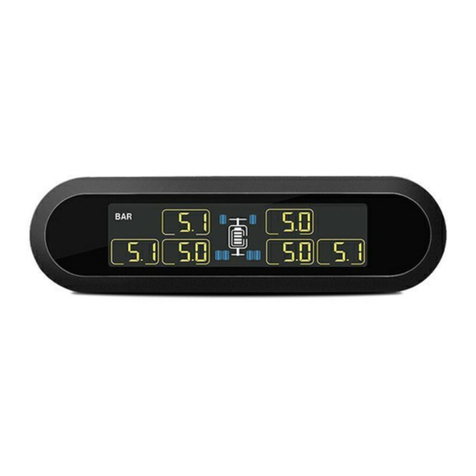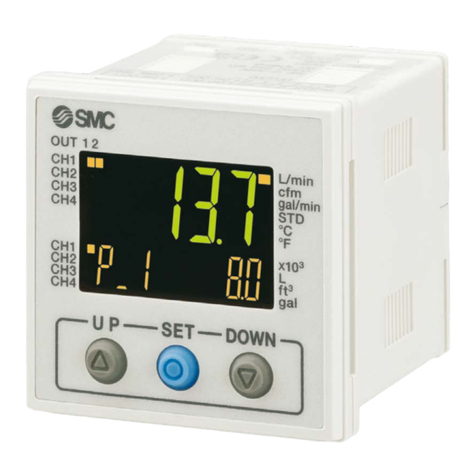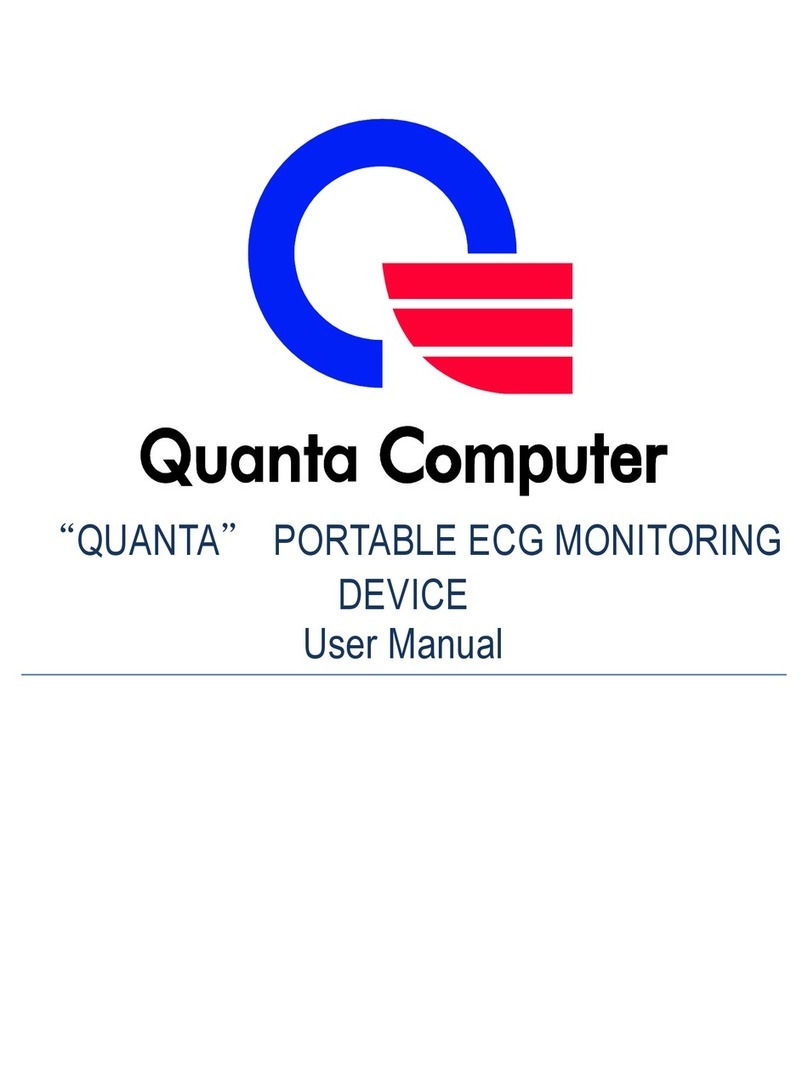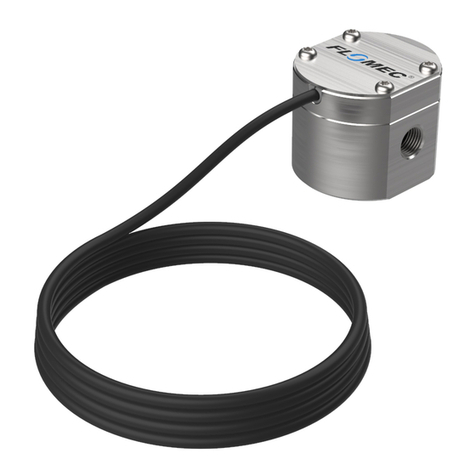CiDRA CYCLONEtrac PST User manual

1
Introduction
2
Equipment Safety Compliance
3
General Safety Guidelines
4
Preparation for Installation
5
Sensor Head Assembly Mounting
6
Electrical Connections to AC
Junction Box
7
Electrical Connections to Power
Entry Box
8
Sensor Head Assembly to Junction
Box Connection
9
Junction Box Operation
10
Maintenance
11
12
13
14
Appendix A CYCLONEtrac PST
Specifications
Installation Manual
P/N 21464-01-EN Rev. 04
Table of Contents
P/N 21464-01-EN Rev. 04


21464-01-EN Rev 04
Page iii
Table of Contents
INTRODUCTION...................................................................................................1-1
Introduction ...........................................................................................................1-1
Junction Box, Power Entry Box and Sensor Head Assembly Description.............1-1
Intellectual Property Notices .................................................................................1-1
Warranty ...............................................................................................................1-2
CiDRA Contact Information...................................................................................1-2
CYCLONEtrac PST EU Declaration of Conformity................................................1-2
EQUIPMENT SAFETY COMPLIANCE.................................................................2-3
Safety....................................................................................................................2-3
North American Emissions....................................................................................2-3
2.2.1 European Emissions and Immunity..........................................................2-3
GENERAL SAFETY GUIDELINES .......................................................................3-5
Introduction ...........................................................................................................3-5
Safety Precautions................................................................................................3-5
Definitions of Symbols...........................................................................................3-5
3.3.1 General Warning or Caution.....................................................................3-5
3.3.2 Grounding.................................................................................................3-6
3.3.3 Canada Compliance.................................................................................3-6
General Warnings and Cautions...........................................................................3-6
PREPARATION FOR INSTALLATION .................................................................4-9
Introduction ...........................................................................................................4-9
Installation Considerations....................................................................................4-9
4.2.1 Preparation...............................................................................................4-9
4.2.2 Power Requirements..............................................................................4-10
4.2.3 System Environmental Conditions..........................................................4-11
4.2.4 Restriction of Access to Power Entry Box and Junction Box..................4-11
Suggested Power Entry Box and Junction Box Installation.................................4-12
SENSOR HEAD ASSEMBLY MOUNTING .........................................................5-13
Pipe Modification Procedure...............................................................................5-13
5.1.1 Suggested Sensor Head Assembly Installation......................................5-17
ELECTRICAL CONNECTIONS TO AC JUNCTION BOX...................................6-19
Junction Box Cable Entry....................................................................................6-19
6.1.1 Mains Power Cable Connection Description...........................................6-20
6.1.2 Sensor Cables 1 thru 16 max Connection Description...........................6-20
6.1.3 Ethernet Connection Description............................................................6-20
AC Power............................................................................................................6-20
6.2.1 Mains Power In.......................................................................................6-21
ELECTRICAL CONNECTIONS TO POWER ENTRY BOX ................................7-23
Power Entry Box Cable Entry..............................................................................7-23
7.1.1 Mains Power Cable Connection Description...........................................7-24
7.1.2 Power Connection to DC Junction Box Description................................7-24
7.1.3 Sensor Cables 1 thru 16 max Connection Description ...........................7-24
7.1.4 Ethernet Connection Description............................................................7-24
AC Power............................................................................................................7-24
7.2.1 Mains Power In.......................................................................................7-25
DC Power from Power Entry Box........................................................................7-27
DC Junction Box Wiring ......................................................................................7-29

21464-01-EN Rev 04
Page iv
SENSOR HEAD ASSEMBLY TO JUNCTION BOX CONNECTION...................8-31
Sensor Head Assembly Connector Attachment..................................................8-31
8.1.1 Ethernet Sensor Head Assembly Connection.........................................8-32
8.1.2 Sensor Head Assembly Cable End Connection .....................................8-32
CYCLONEtrac PST Sensors...............................................................................8-34
JUNCTION BOX OPERATION ...........................................................................9-37
Instruction for Use...............................................................................................9-37
Operating Controls..............................................................................................9-37
MAINTENANCE ............................................................................................10-39
Instructions for Cleaning ...................................................................................10-39
Preventative Maintenance.................................................................................10-39
Fuse Replacement............................................................................................10-40
Appendix A...................................................................................................................A-1
List of Figures
Figure 1: General Warning or Caution Symbol.............................................................3-5
Figure 2: Grounding Symbol ........................................................................................3-6
Figure 3: Canada Compliance Symbol.........................................................................3-6
Figure 4: Sensor Head Assembly Mounted to Pipe......................................................4-9
Figure 5: Junction Box Mounting................................................................................4-12
Figure 6: Hydrocyclone Battery..................................................................................5-13
Figure 7: Hole Placement...........................................................................................5-14
Figure 8: Mounted Sensor Head Assembly................................................................5-15
Figure 9: Temporary Plug...........................................................................................5-15
Figure 10: Saddle Assembly ......................................................................................5-17
Figure 11: Junction Box Connections.........................................................................6-19
Figure 12: Mains Power Connection (NO POWER ENTRY BOX) .............................6-21
Figure 13: Power Entry Box Connections...................................................................7-23
Figure 14: Mains Power Connection ..........................................................................7-26
Figure 15: 24VDC Power to Junction Box..................................................................7-27
Figure 16: DC Power Connection, Power Entry Box..................................................7-28
Figure 17: Mains and DC Power Connections ...........................................................7-29
Figure 18: Junction Box DC Power connection..........................................................7-30
Figure 19: Junction Box to Sensor Head Assembly Connector..................................8-31
Figure 20: Sensor Head Assembly Mounted to Pipe..................................................8-32
Figure 21: Terminal Block Numbering 1-8, 9-16.........................................................8-32
Figure 22: Sensor Cable Connection to Junction Box Terminals...............................8-33
Figure 23: Typical CYCLONEtrac PST Array.............................................................8-34
Figure 24: Example OPTIGrind PST Display .............................................................8-35
List of Tables
Table 1: Cable Connection Status LED Indication .....................................................8-34
Table 2: Individual Sensor Status Indicators..............................................................8-35

21464-01-EN Rev 04
Page 1-1
INTRODUCTION
Introduction
CYCLONEtrac PST is an individual hydrocyclone performance
monitoring system that provides on-line particle size measurement of
material reporting to the overflow. This allows optimization of the grind
line and cyclone battery.
This manual covers the basic installation and setup of the
CYCLONEtrac PST Junction Box, Power Entry Box, and Sensor Head
Assembly.
In all cases, local safety and operating practices take precedence over
the information contained within this document.
Junction Box, Power Entry Box and Sensor Head
Assembly Description
CYCLONEtrac PST has 2 possible configurations:
1. AC-powered Junction Box, refer to Chapter 6.0 for installation
instructions.
2. Power Entry Box with DC-powered Junction Box, refer to
Chapter 7.0 for installation.
The second configuration, Power Entry Box with DC-powered
Junction box eliminates any hazardous voltages in the Junction Box.
The Junction Box interfaces to a maximum of 16 Sensor Head
Assemblies. It provides RS485 communication to the Sensor Head
Assembly and converts the RS485 signals to Ethernet for Laptop
connection.
The Sensor Head Assembly attaches to the pipe and varies in size
according to pipe size. The Sensor Head Assembly detects particles
impinging or striking the sensor. The sensor head assembly then
converts the particle impinging to electric signals and sends this
information to the Junction Box.
Intellectual Property Notices
Hydrocyclone Performance Monitoring Products may be covered by
one or more of the following granted U.S. Patent(s): 6,354,147;
6,435,030; 6,587,798; 6,601,458; 6,609,069; 6,691,584; 6,732,575;
6,813,962; 6,862,920; 6,889,562; 6,988,411; 7,032,432; 7,058,549;
7,062,976; 7,086,278; 7,110,893; 7,121,152; 7,127,360; 7,134,320;
7,139,667; 7,146,864; 7,150,202; 7,152,003; 7,152,460; 7,275,421;
7,359,803; 7,363,800; 7,437,946; 7,529,966; 7,657,392

21464-01-EN Rev 04
Page 1-2
Other patents are pending; see www.cidra.com for the latest listing of
patents.
This manual is covered by U.S. and international copyright laws. No
part of this manual may be reproduced, modified or transmitted in
whole or in part in any form or by any means, electronic or
mechanical, including photocopy, recording, or any information
storage and retrieval system, without permission in writing from
CiDRA. Copyright © 2009 by CiDRA, all rights reserved.
CYCLONEtracTMPST,and logo are trademarks of CiDRA.
Warranty
The terms and conditions, including warranty, of the purchase of
CYCLONEtrac PST Hydrocyclone Monitoring System are given in the
document titled “CiDRA’s Terms and Conditions of Sale”.
CiDRA Contact Information
CiDRA Corporate Services
50 Barnes Park North
Wallingford, CT, USA 06492
Telephone: 1-203-265-0035
1-877-243-7277 (US and Canada)
Email: www.cidra.com
CYCLONEtrac PST EU Declaration of Conformity
The EU Declaration of Conformity provides the justification for the CE
marking of a product. It identifies all the EU Directives that apply to the
product along with the Standards that the product was designed to or
tested against to demonstrate compliance with those directives. CE
marking is a requirement only for products sold in the European
community. The EU Declaration of Conformity are for CYCLONEtrac
PST product in Ordinary Location.
The Declaration of Conformity can be found on www.cidra.com
Certification Section.

21464-01-EN Rev 04
Page 2-3
EQUIPMENT SAFETY COMPLIANCE
Safety
This equipment is listed with TÜV Rheinland of North America, Inc., a
nationally recognized testing laboratory, and certified for ordinary
location use per the following US, and Canadian standards: IEC / EN
61010-1 Edition 3, UL 61010-1 Third Edition and CSA C22.2 No
61010-1-12
North American Emissions
This equipment is compliant with Class A limits for radiated and
conducted radio noise emissions, as defined in Subpart A of Part 15 of
the FCC rules, as well as the requirements defined in ICES-003 for
Canada.
This Class A digital apparatus complies with Canadian ICES-003.
Cet appareil numérique de la classe A est conforme à la norme NMB-
003 du Canada.
For Electromagnetic Compatibility (EMC) requirements, this product is
categorized as Group 1, Class A ISM equipment. This categorization
applies to Industrial, Scientific or Medical equipment that intentionally
generates or uses conductively coupled (but not intentionally radiated)
radio-frequency energy that is necessary for the internal functioning of
the equipment. The level of EMC compliance is consistent with
industrial use but not for domestic purposes.
2.2.1 European Emissions and Immunity
This equipment is compliant with the requirements set forth in EN
61326-1, Laboratory Use - EMC requirements as well as EN 55011
Industrial, Scientific, and Medical (ISM) Radio Frequency Equipment -
Radio Disturbance Characteristics - Limits and Methods of
Measurement.
CAUTION
Class A equipment is intended for use in an industrial
environment. There may be potential difficulties in ensuring
electromagnetic compatibility in other environments, due to
conducted as well as radiated disturbances.

21464-01-EN Rev 04
Page 2-4
*** This Page is Blank***

21464-01-EN Rev 04
Page 3-5
GENERAL SAFETY GUIDELINES
Introduction
This manual is intended to be a general installation guide for the
CYCLONEtrac PST process monitoring systems. It is not intended to
cover the installation details for every process due to the wide variety
of applications and processes on which the system can be used. In all
cases, local safety and operating practices should take precedence
over instructions contained within this manual.
The installer must fully read this manual prior to installing and
operating the CYCLONEtrac PST process monitoring system.
Safety Precautions
The following style of Warnings and Cautions are used throughout the
manual to draw attention to information regarding personnel safety
and equipment care. They are intended to supplement but not replace
local or plant safety procedures.
WARNING
Situation has the potential to cause bodily harm or death.
CAUTION
Situation has the potential to cause damage to property or
equipment.
Definitions of Symbols
The following terms and symbols are used in this document and on
the process monitoring system where safety related issues occur.
3.3.1 General Warning or Caution
Figure 1: General Warning or Caution Symbol
The Caution Symbol in Figure 1 appears in Warning and Caution
tables throughout this document. This symbol designates an area
where personal injury or damage to the equipment is possible.
Documentation needs to be consulted in all cases where this symbol
is used.

21464-01-EN Rev 04
Page 3-6
3.3.2 Grounding
Figure 2: Grounding Symbol
The Grounding Symbol in Figure 2 appears on labels affixed to the
process monitoring system. This symbol identifies components that
are part of the protective earth circuit. See Section 4 for instructions
for wiring this protective earth circuit to a local earth ground.
3.3.3 Canada Compliance
Figure 3: Canada Compliance Symbol
This product has been tested to the requirements of CAN/CSA-C22.2
No. 61010-1, third edition, including Amendment 1, or a later version
of the same standard incorporating the same level of testing
requirements.
General Warnings and Cautions
Observe these rules when operating or servicing this equipment:
•If the equipment is used in a manner not specified by
manufacturer, the protection provided by the equipment may be
impaired.
•Prior to operation of this equipment, personnel should read the
instruction manual thoroughly.
•Trained personnel must carry out service on this equipment.
•Follow all warnings on the unit and in the operating instructions.
•Follow static sensitive device precautions when servicing.
•Do not wear rings or wristwatches when servicing this equipment.
•To preserve the safety of this product, use only manufacturer
specified replacement parts and do not perform unauthorized
substitutions or modifications.
•Prior to servicing, lockout all electrical power sources.
•This product should only be powered as described in the manual.
Read the instructions for proper input voltage range selection.

21464-01-EN Rev 04
Page 3-7
•This equipment is grounded through the grounding conductor of
the power cord.
•Ensure all power cords, to Junction Box cables, Power Entry Box
cables and Sensor Head Assembly signal cables are properly
routed to eliminate damage to them. Cable conduit may be
desirable to minimize potential damage.
•Do not run power and signal wires in a common conduit.
•Fuse replacement must be performed by trained service
personnel.
•Disconnect power to Junction Box or Power Entry Box prior to
replacing fuse(s).
•Use only the specified fuse(s) with the correct type number,
voltage and current ratings as referenced in the appropriate
locations in the service instructions or on the equipment.
•CiDRA performs a leak test (pipe to Saddle/Sensor Head
Assembly) at maximum pressure of 30 PSI prior to shipment of the
assembly. This verifies non-leakage of sensor and improves
safety risk factor.

21464-01-EN Rev 04
Page 3-8
*** This Page is Blank***

21464-01-EN Rev 04
Page 4-9
PREPARATION FOR INSTALLATION
Introduction
The Sensor Head Assemblies (Figure 4: Sensor Head Assembly
Mounted to Pipe) process the sensor data for output to the
CYCLONEtrac PST data acquisition and reporting system.
Figure 4: Sensor Head Assembly Mounted to Pipe
Installation Considerations
4.2.1 Preparation
Prior to installing the CYCLONEtrac PST system, verify that the
system is rated for the area where it will be installed. Consider the
available power, the ambient temperature, and the installation area
classification. If the markings on the Junction Box, Power Entry Box
and Sensor Head Assembly received are not consistent with the
conditions of the area in which it is be installed, contact Customer
Support.
Note: The CYCLONEtrac PST system is rated for use only in non-
hazardous locations.
Warning
Explosion hazard –Install only in Non-Hazardous locations.
In addition to the warnings and cautions in this section, refer also to
the General Safety Guidelines in Section 3.

21464-01-EN Rev 04
Page 4-10
4.2.2 Power Requirements
Ensure electrical power is turned off to the Power Entry Box and
Junction Box prior to working on the Junction Box or the Sensor Head
Assembly.
The CYCLONEtrac PST system requires a voltage of 100 –240 volts
AC, 50/60 Hz, and requires a total power of 400 Watts for 2 Junction
Boxes or 200 Watts for 1 Junction Box.
WARNING
Electrical shock hazard. Always disconnect power source prior
to removing fuses. Failure to remove power source may result
in injury or death.
Do not modify the Junction Box, Power Entry Box or Sensor Head
Assembly.
The Sensor Head Assembly requires an input of 24VDC and 6 watts
of power.
Refer to the fuse labels in the Power Entry Box and Junction Box or
Appendix A for input power fuse ratings.
Only replace fuses with the fuse type indicated on the label inside of
the enclosure.
WARNING
Do not modify the Junction Box, Power Entry Box or Sensor
Head Assembly housings by adding holes or cutouts. This will
void the equipment safety rating.

21464-01-EN Rev 04
Page 4-11
4.2.3 System Environmental Conditions
The system operating temperature range is:
Power Entry Box
-4°F to +140°F (-20°C to +60°C)
Junction Box
-4°F to +140°F (-20°C to +60°C)
Sensor Head Assembly
14°F to +122°F (-10°C to +55°C)
The Power Entry Box, Junction Box and Sensor Head Assembly
enclosure are suitable for operation in 0 to 95% non-condensing
humidity environments.
4.2.4 Restriction of Access to Power Entry Box and Junction Box
Access to opening the cover to the Junction Box, Power Entry Box
and Sensor Head Assembly must be restricted to properly trained
service personnel only.

21464-01-EN Rev 04
Page 4-12
Suggested Power Entry Box and Junction Box
Installation
The Junction Box shown in Figure 5: Junction Box Mounting is
attached to 2 strut channels. Installation should be done by 2 people.
Mounting is made easier using 2 strut channels. There are four 1”
[2.54cm] adjustable pipe strut mount clamps inserted into the
channels which can be used to attach to railing. Junction Box
dimensions are 20” x 16” x 8” [50.8cm x 40.6cm x 20.3cm]. Power
Entry Box dimensions are 16” x 12” x 8” [40.6cm x 30.5cm x 20.3cm].
Allow at least 6-inch [15.3cm] clearance on all sides of boxes.
Figure 5: Junction Box Mounting

21464-01-EN Rev 04
Page 5-13
SENSOR HEAD ASSEMBLY MOUNTING
Pipe Modification Procedure
The following figure illustrates a typical hydrocyclone battery
Figure 6: Hydrocyclone Battery

21464-01-EN Rev 04
Page 5-14
To install the PST system, the hydrocyclone overflow pipes must have
a through-hole on the pipe. The exact size (2” or 5.1cm in the
example below) will be specified by CiDRA. The following example
shows a 2” (5.1cm) hole installed in a hydrocyclone overflow pipe.
Figure 7: Hole Placement

21464-01-EN Rev 04
Page 5-15
The modified overflow pipes will then be installed in preparation for
the CiDRA Particle Size System. The pipe with installed system is
shown in the following figure.
Figure 8: Mounted Sensor Head Assembly
Often, temporary plugs are installed prior to installation of the particle
size system as shown below.
Figure 9: Temporary Plug

21464-01-EN Rev 04
Page 5-16
The following is a suggested procedure for preparing and modifying
the overflow pipes.
1. Inspect the rubber liner. If large tears exist, consult with
engineering to determine if replacement is required.
2. Clean the outside of the overflow pipe using water and a wire
brush. Pay special attention to the CYCLONEtrac band area.
3. Rotate the overflow pipe so that the drill location is facing up.
Block the sides of the pipe to prevent it from rolling.
4. Use a tape measure and marker to mark the drill point location
and tooling plate location.
5. Mount the magnetic drill tooling plate.
6. Mount the magnetic drill on the tooling plate. Engage the
electromagnet.
7. Use the fine adjustment feature on the magnetic drill to align the
drill point.
8. Drill the 2” [5.1cm] hole.
9. Remove the magnetic drill and tooling plate.
10.Inspect the liner to be sure the rubber did not separate from the
pipe wall.
CAUTION
Always wear eye protection when drilling.
Other manuals for CYCLONEtrac PST
1
Table of contents
Other CiDRA Measuring Instrument manuals
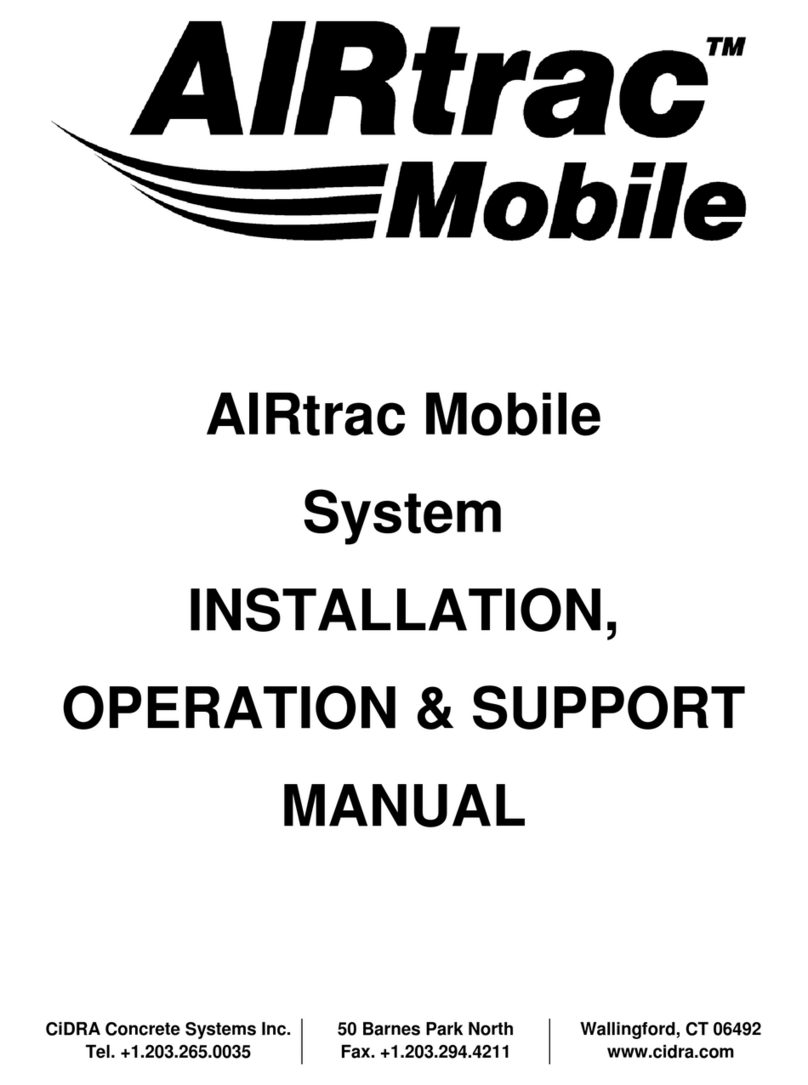
CiDRA
CiDRA AIRtrac Installation instructions
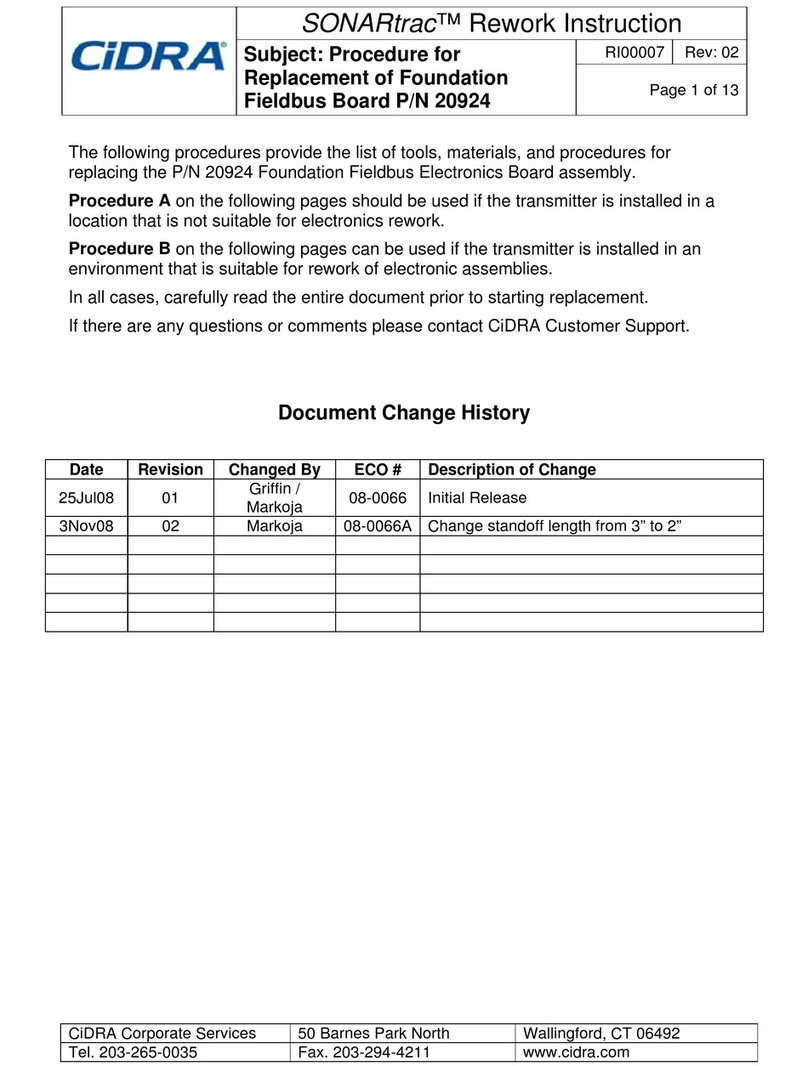
CiDRA
CiDRA SONARtrac 20924 User manual

CiDRA
CiDRA CYCLONEtrac PST User manual
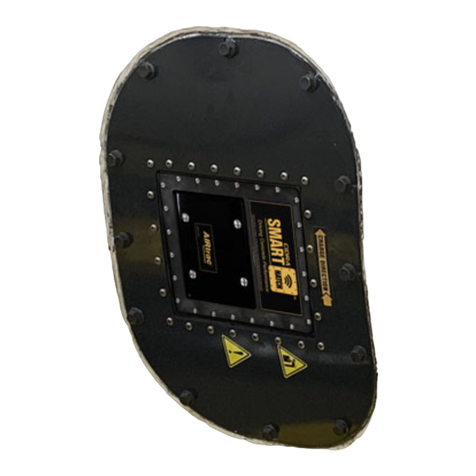
CiDRA
CiDRA SMARThatch Operating and maintenance manual
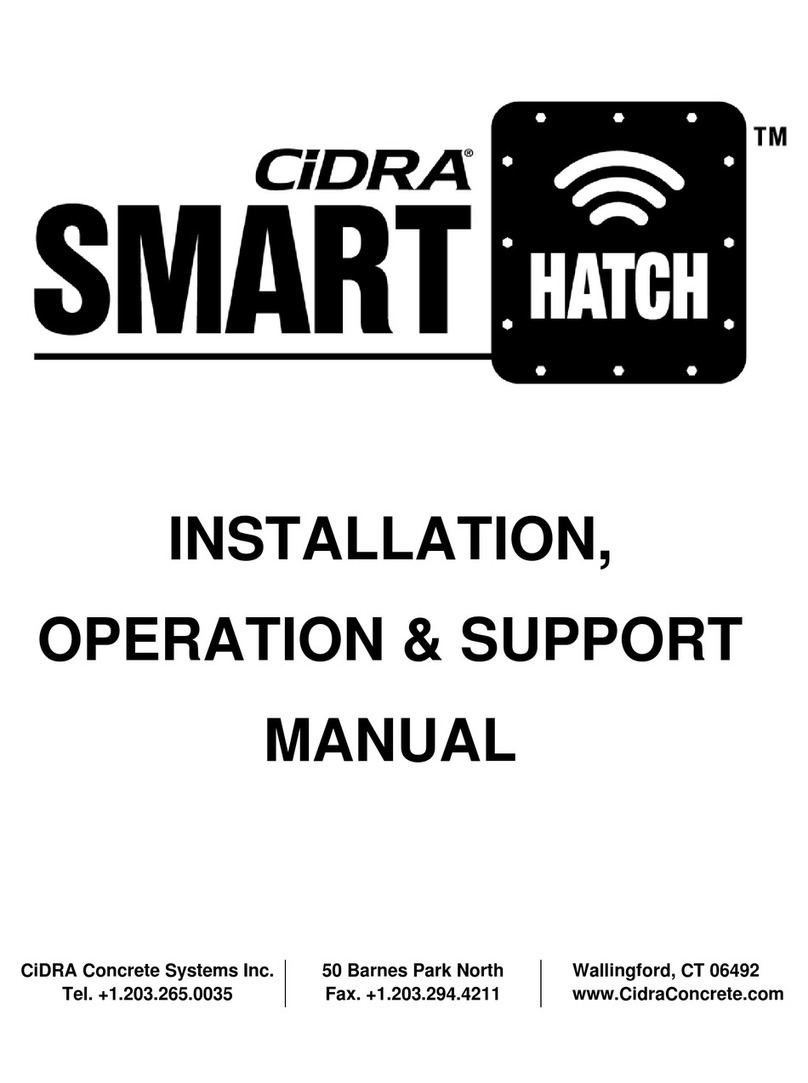
CiDRA
CiDRA SMART HATCH User manual
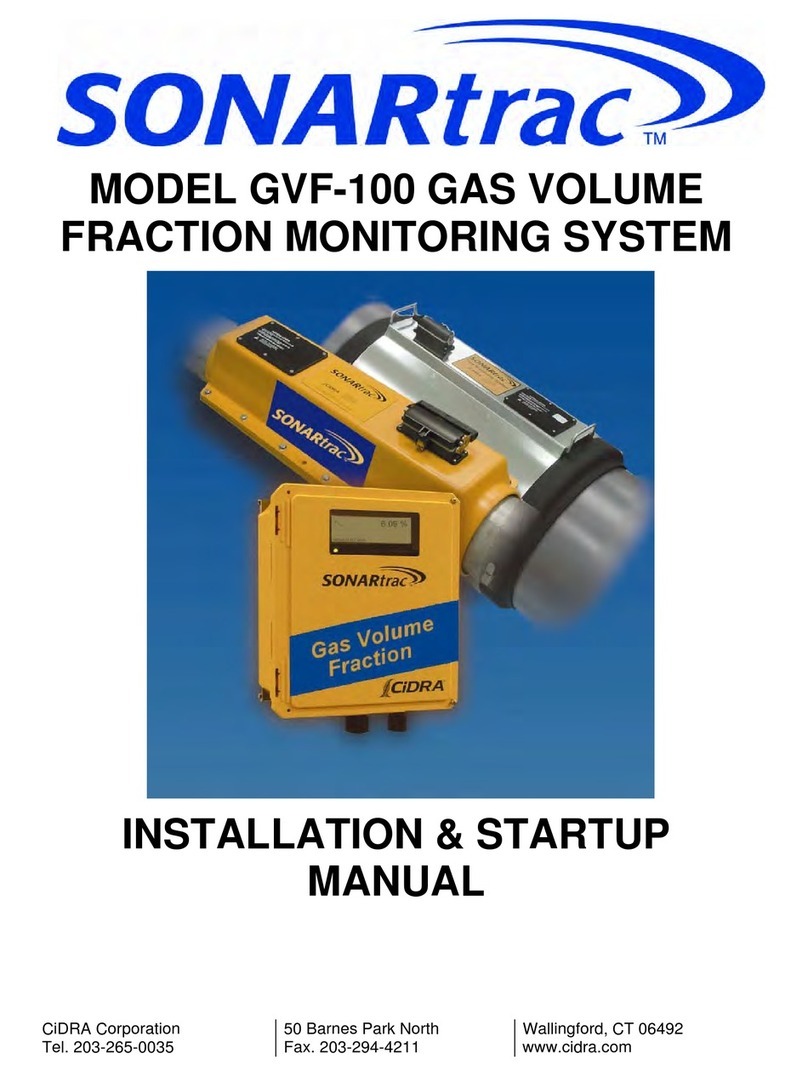
CiDRA
CiDRA Sonartrac GVF-100 Installation and operation manual

CiDRA
CiDRA SMARThatch Quick start guide
Popular Measuring Instrument manuals by other brands

Kobelt
Kobelt 7178 Series Owner's installation, operation and maintenance manual
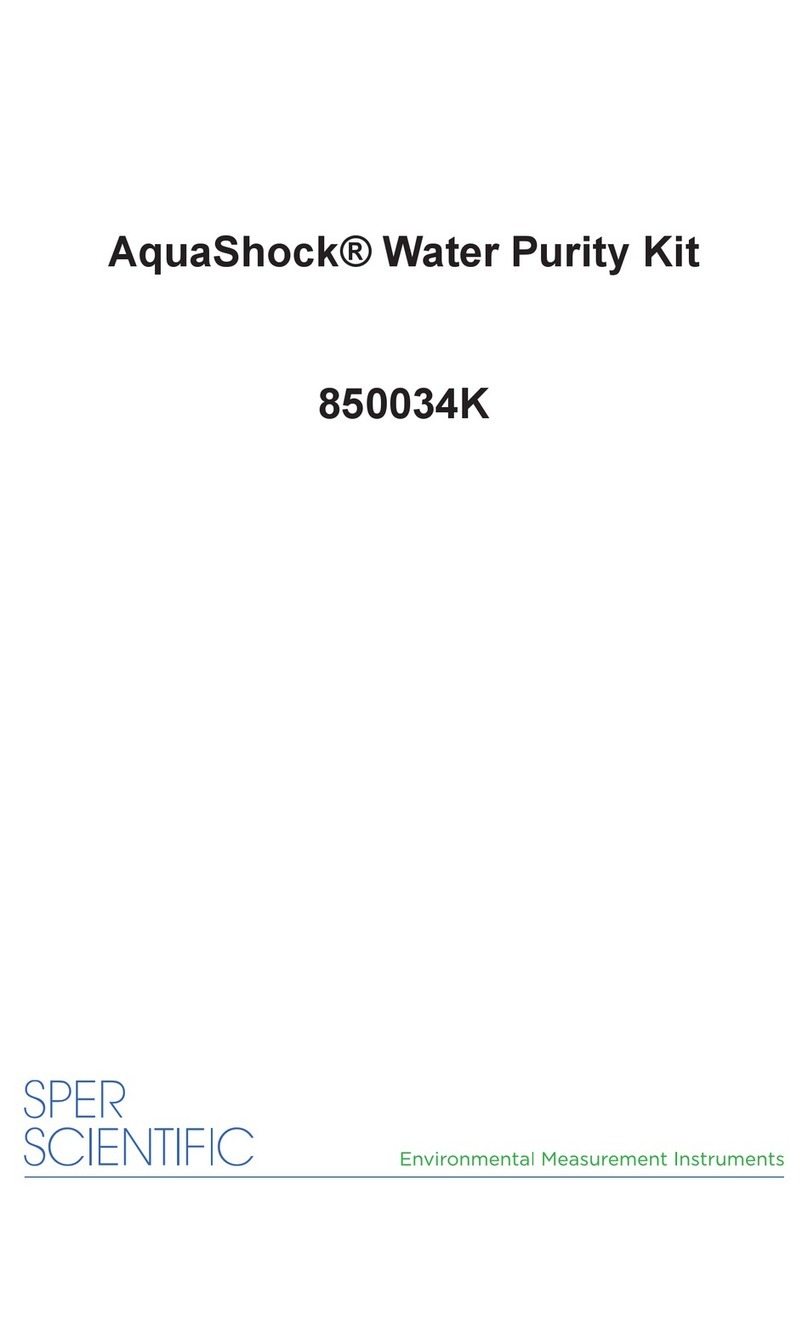
Sper scientific
Sper scientific AquaShock 850034K instruction manual
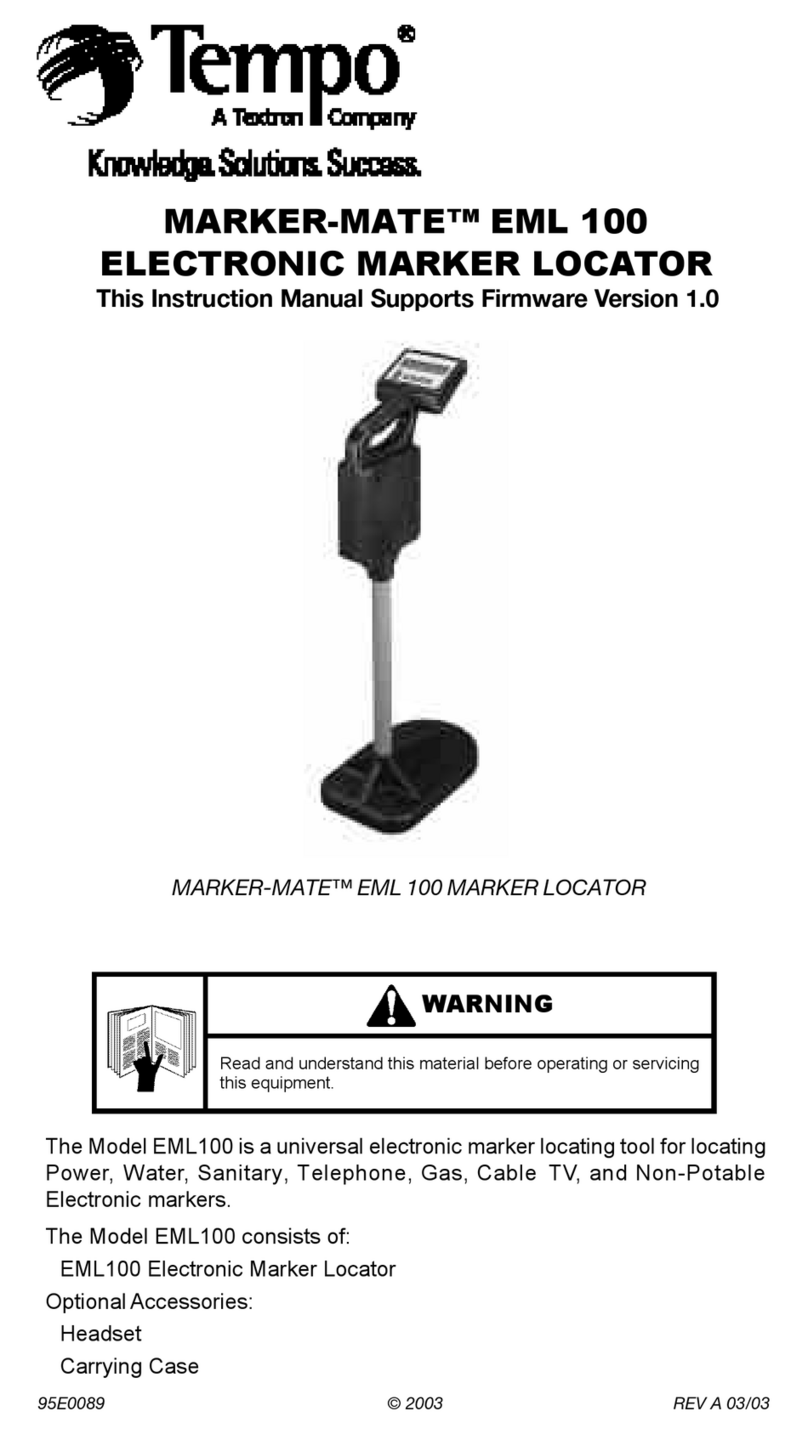
Textron
Textron Tempo Marker-Mate EML 100 instruction manual

Cynosure
Cynosure Apogee Elite Technical guide
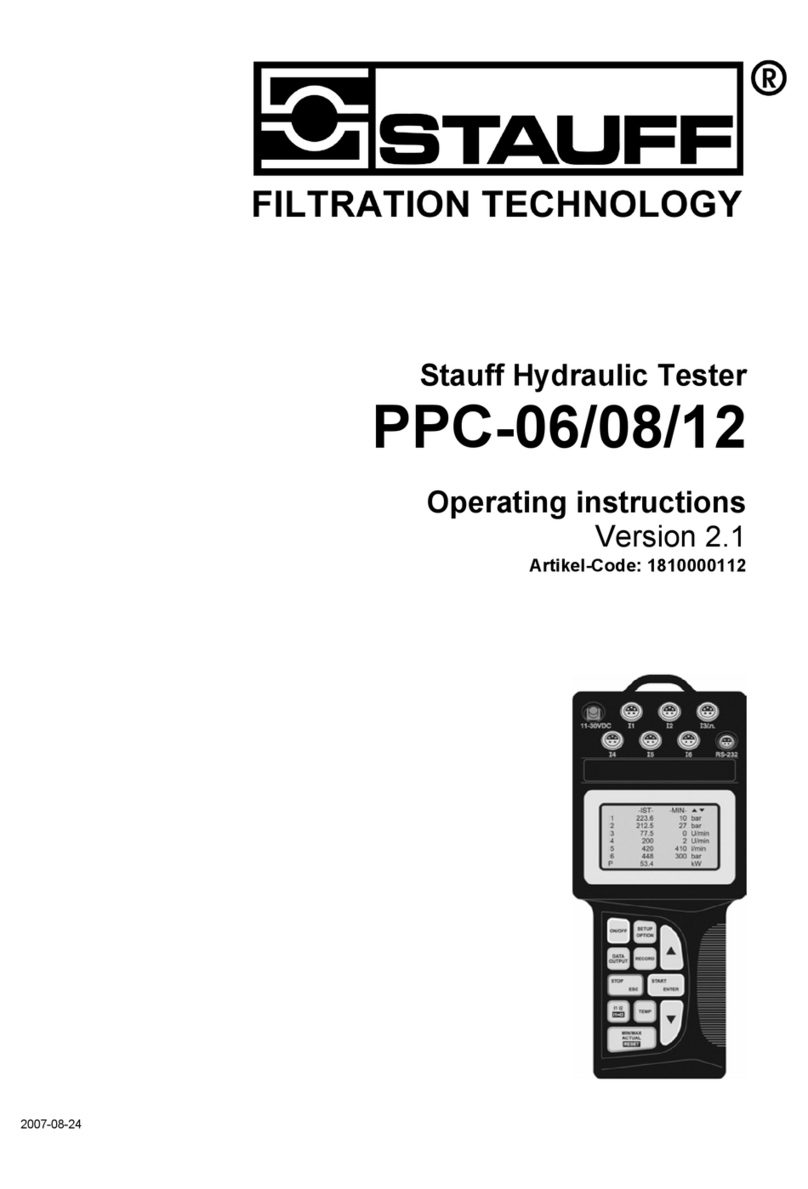
STAUFF
STAUFF PPC-06 operating instructions
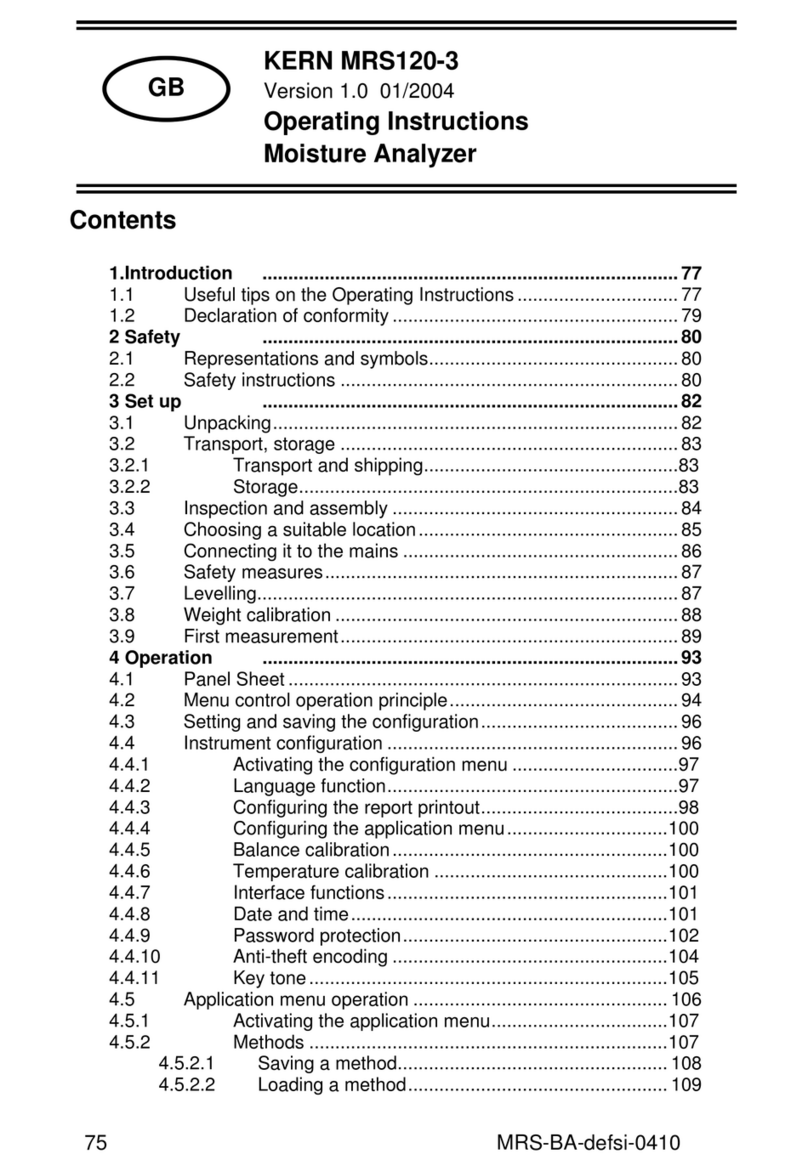
KERN
KERN MRS120-3 operating instructions
